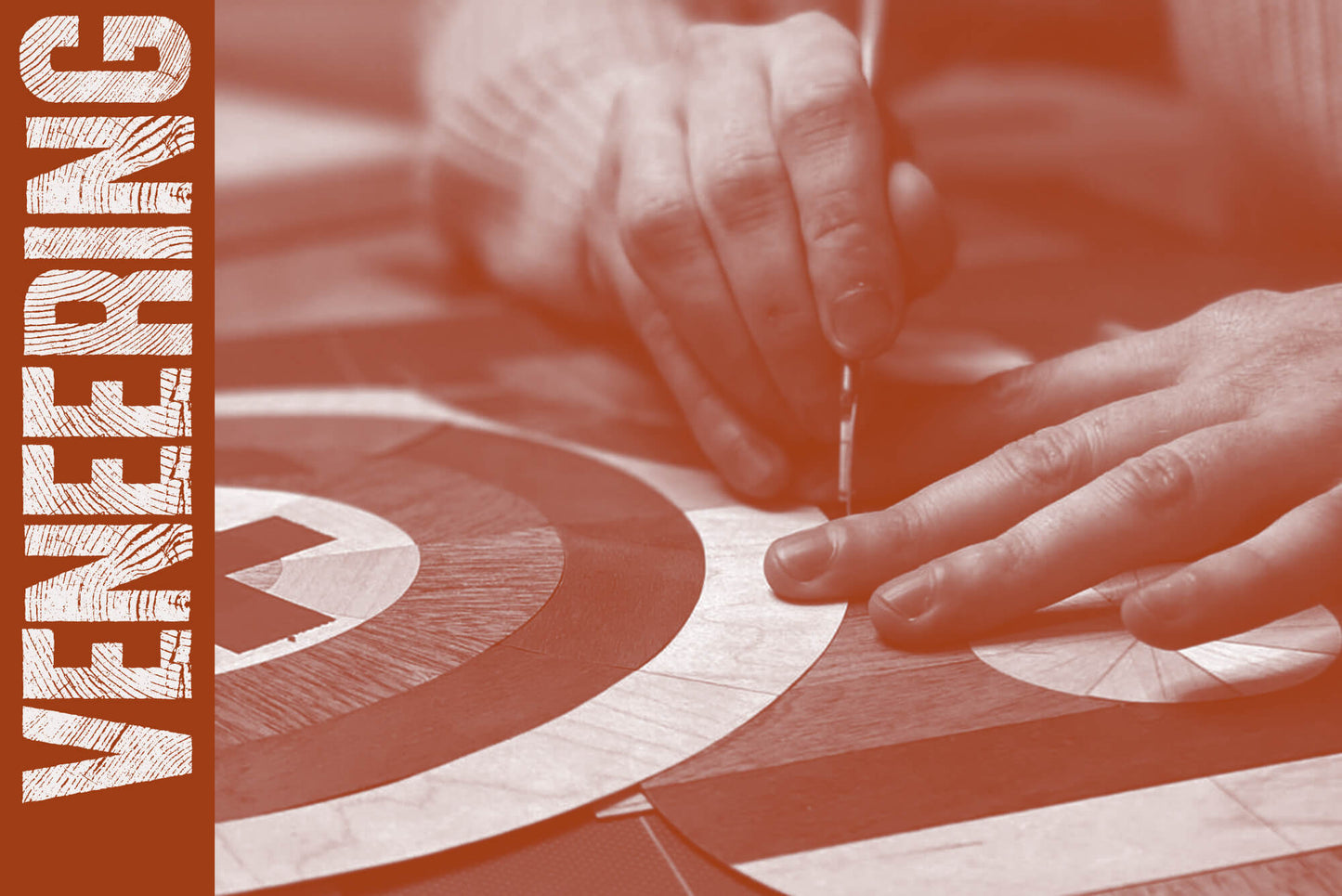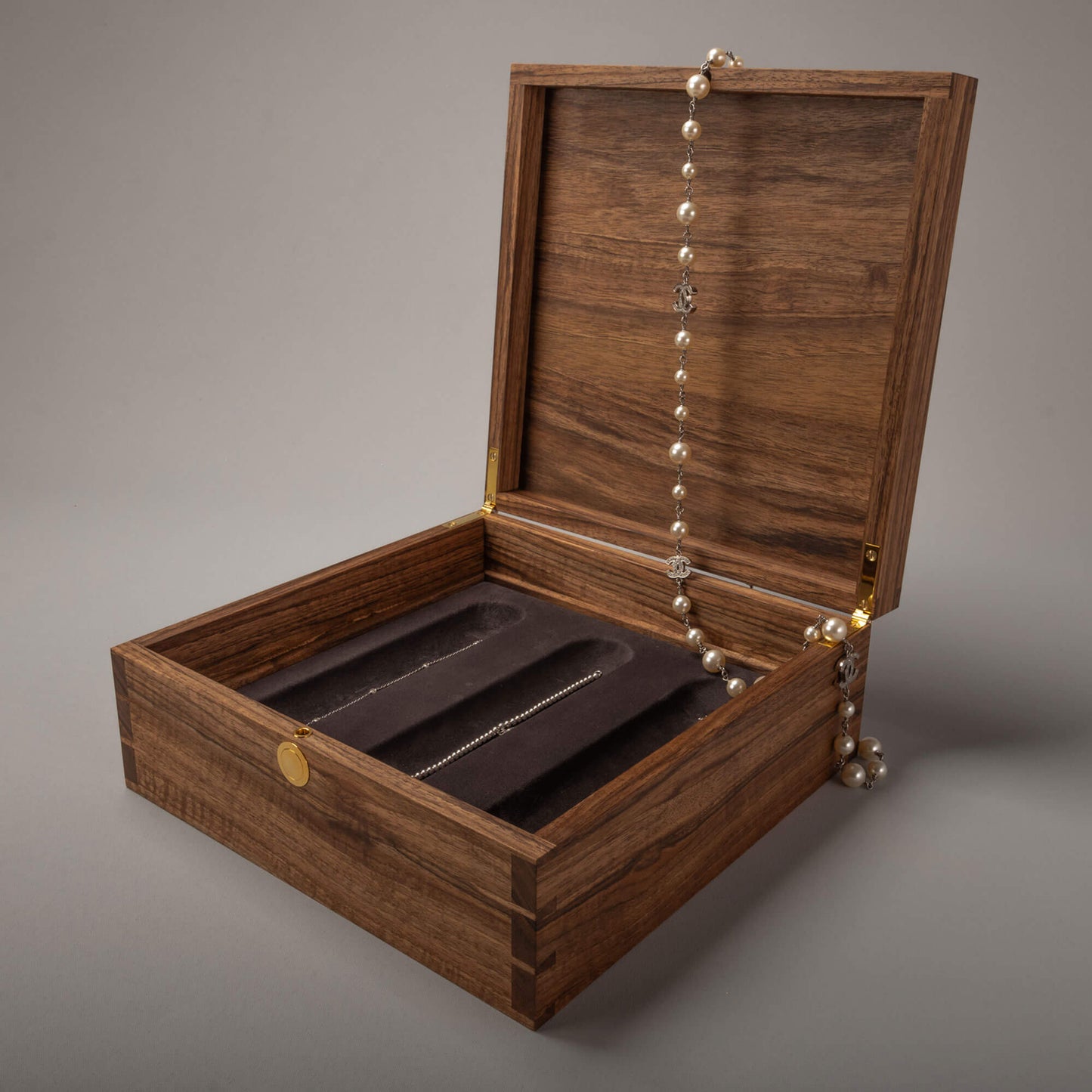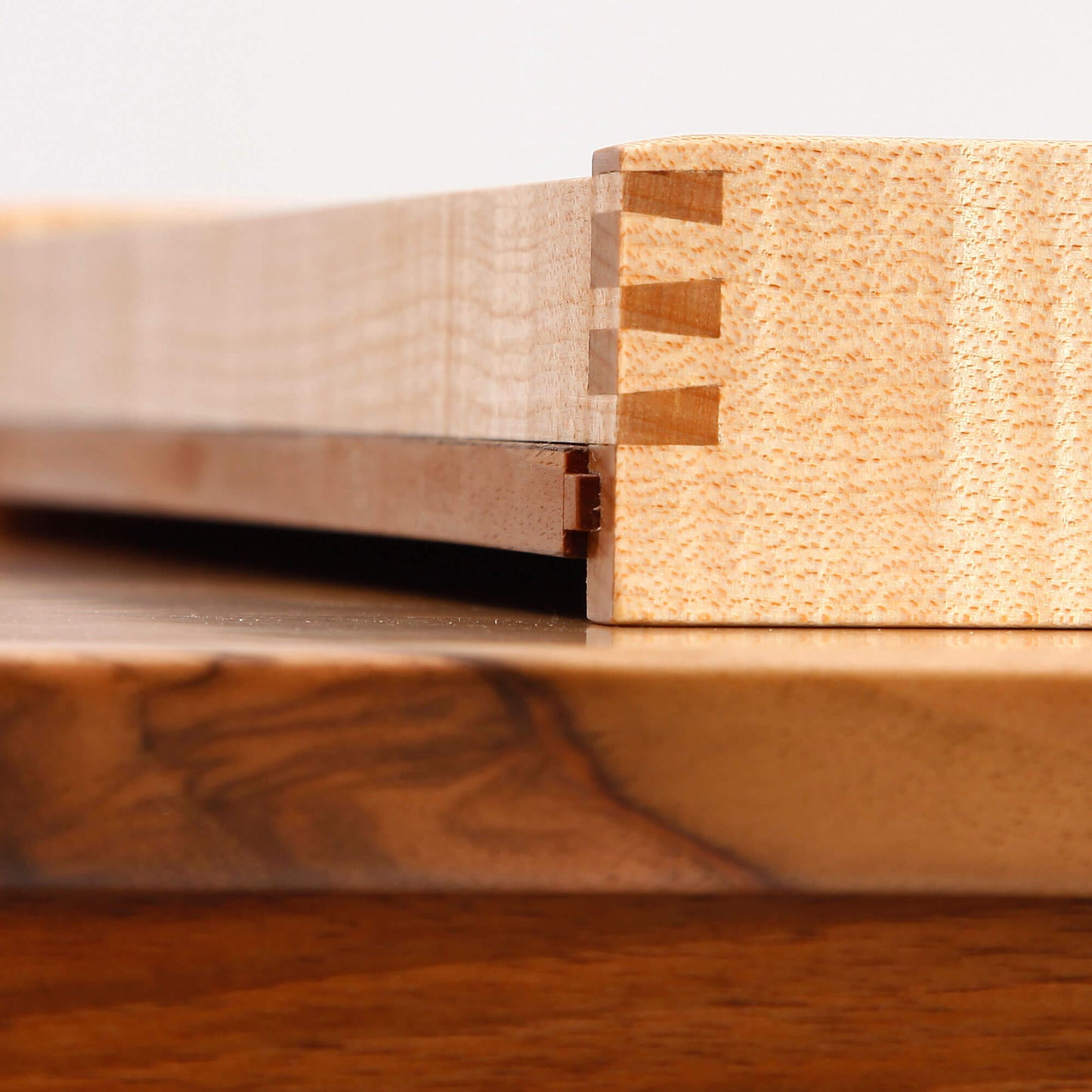
Ever wondered what gives fine furniture that exquisite, flawless finish? Well, let’s dive into the world of veneer, a material that's been adding a touch of magic to furniture for centuries.
Just like the traditional technique of making Dovetail Joints, Veneering has been around for quite a while—think ancient Egypt! It's thought that its use came about because wood was scarce in desert climates, so veneer was invented to maximise the amount of output possible from a given piece of wood. In this way, the invention of veneer was actually around sustainability! By using veneer, we can make the most out of precious wood resources. A single log can cover a much larger surface area, reducing waste and promoting sustainability.
The Egyptians were the pioneers, using thin slices of wood to create intricate designs on their furniture and sarcophagi. Fast forward to the 17th and 18th centuries in Europe, and veneer became a big hit among cabinet makers. These skilled artisans discovered that they could use rare and exotic woods sparingly, applying thin layers over less expensive wood to craft stunning pieces without breaking the bank.
In simple terms, veneer is a thin slice of wood, usually less than 3mm thick, that's glued onto core panels like plywood or MDF (Medium-Density Fiberboard). This technique not only makes use of expensive woods more economically but also opens up a world of design possibilities.
My first experience of using veneers was in a box project at Williams & Cleal, in Somerset UK, where I made a Pokémon card wooden box for my daughter Maggie and designed a marquetry palm tree which was inlaid on the base of the box, to remind her of our time in Dubai. This technique not only makes use of expensive woods more economically but also opens-up a world of design possibilities. I love to use it to create a motif that’s meaningful to its owner.

There are so many amazing finishes, colours and textures available that it’s easy to get carried away, to refine the options I think of the design I am trying to achieve and choose veneers that will enhance the visual design and complement the wood’s colour and grain.


The series of images used are a mixture between veneers available at Mundy Veneer and veneering work, finished and in progress, by myself and other students at Williams & Cleal.


Contact me if you would like to commission a personalised piece of fine furniture or lovingly crafted handmade wooden box for someone special.
Thanks to Mundy Veneer and Williams & Cleal for the images.
Useful links
Williams & Cleal - veneering; parquetry and marquetry weekend course
Mundy Veneer - suppliers of veneers in Wellington, Somerset UK

